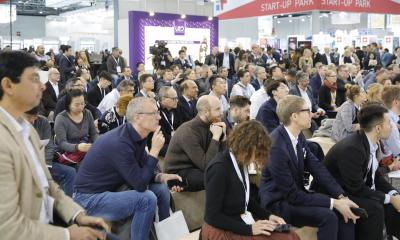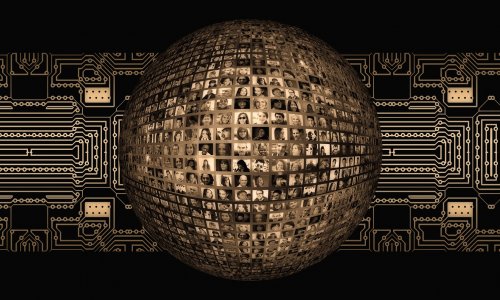Healthcare delivery on the move
The recent Swiss eHealth Summit, a Healthcare Information and Management Systems Society (HIMSS) event supported by key organisations, drew 600 leaders from hospitals, policymaking and the industry. Among the key topics: how IT enables access to information in a mobile environment, referred to by speaker Uwe Buddrus as mHealth.

‘mHealth,’ Uwe Buddrus believes, ‘is still in its relative infancy: the share of mobile workstations is 10 percent in Germany, six in Italy, and three in Spain. Still the most widespread concepts are laptops and carts – “computers on wheels”. While the private use of smartphones and tablets has been skyrocketing lately, professional use of such devices has caught hospital IT off-guard. ‘Today, mobile infrastructure is increasingly driven by consumer products: many physicians carry private smartphones and tablets and are demanding access to clinical information through their Android, iPhone, or Blackberry. Many hospitals are giving in to this demand; at the same time, care-related apps are becoming increasing popular with non-medical staff as well as patients. ‘The next step will be integration with patient monitoring devices and sensors, with spirometry and other biometrics moving to wireless.’
How would you break down the global penetration of mHealth?
‘The use of mobile IT is clearly more advanced in the USA than in most European countries. While 15 percent of all workstations are mobile (e.g. laptops) and 91 percent of US hospitals operate a WLAN, these shares are significantly lower in Germany, Spain and Italy, for example. With 84 percent of hospitals running wireless, the share is highest in Spain, but just three percent of all workstations being mobile means that Spanish hospitals cannot really make full use of the potential. Italian hospitals are lagging clearly behind in the implementation of WLAN, with just 32 percent. However, even in Germany, a mere 57 percent of hospitals have a WLAN to make the 10 percent truly mobile. ‘Whilst there Is one workstation for about every second user (clinical or administrative) in the average US, German, Italian or Spanish hospital, this ratio is significantly different regarding mobile devices (laptops, carts, tablets, PDAs/smartphones) in the WLAN. In the US, on average one mobile device in the WLAN is available for every fifth user, while this is true for every tenth user in Germany and around every twentieth user in Italy and Spain.’
Which options are available?
‘Computers/Workstations-on-Wheels, CoWs/WoWs with built-in desktops or with laptops are most common, differing greatly in usability. Clinical tablet PCs designed to cater for the hygiene and ergonomic needs of clinicians have shown limited adoption. ‘Smartphones and tablets open up a completely new spectrum of applications – ranging from instant communication, appointment reminders, text messaging, secure email exchange, through biomedical connection via Bluetooth to devices for pulse or blood pressure measurement or scales, and to distributed and collaborative care concepts facilitated by access to clinical information, professional online networks, health apps, etc. ‘The future will see increased integration of mobile information and communication technology with body-connected or even implanted sensors.’
How can EMRs be turned into apps?
‘Information presented on a mobile device has to be less complex. Current EMRs aim to provide as much information on one screen as possible. Clearly, this is not possible on small-screen smartphones, tablets, notebooks, or laptops. EMR navigation needs to be adapted; and users expect personalisation of the information displayed to match their role – a cardiologist requires information different from a radiologist, and clinician needs vary from those for nurses. The subsequent challenge is to enable interaction, such as entering patient data, documenting care activities and reacting to clinical decision support (CDSS) offerings. Vendors must provide clear concepts for user rights management, data security, and device management.’
What benefits can mHealth bring to care?
‘It will transform the clinician-patient relationship in many aspects. Mobile devices give “deskless” care workers new tools to perform their tasks better. Providing CDSS and a closed-loop for medication safety are key challenges to hospitals in EMR adoption. Mobile devices at the point of care are enablers of e-prescribing with fewer adverse events, faster awareness of medical alerts, including recalls and approvals, the capability to react to last-minute changes, and to increased patient compliance with better physician access to nursing records. ‘High resolution still-frame and video cameras facilitate collaboration; GPS combined with Internal Positioning Systems will provide location-based services, such as locating devices, noting the time a nurse enters a room, or tracking the movements of a dementia patient. ‘Body-connected sensors, nanotechnologies and implanted sensors will expand the potential for personalised healthcare, for applications in genomics, and machine-to-machine or app-to-app connectivity.‘
What are the barriers?
‘They relate to security and regulatory requirements; to a lack of funding for infrastructure and IT support; to insufficient technical and support infrastructure – WLAN, trained IT staff. A change is in the communication behaviour and work organisation among users and for skill building in staff regarding IT literacy, qualification, and adoption. mHealth may present challenges; however, its potential to improve the quality of care and reduce medical errors compares well with these efforts.’
PROFILE
Uwe Buddrus, Managing Director, HIMSS Analytics Europe, presenting the present and future of mHealth during the Berne summit.
07.11.2012











